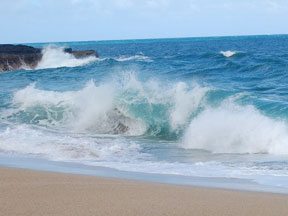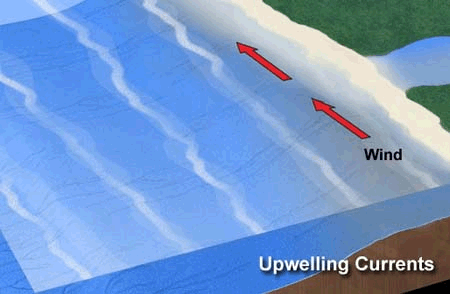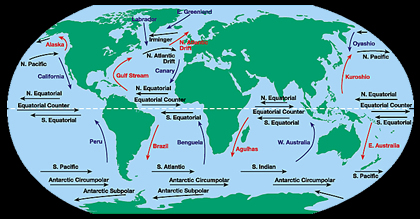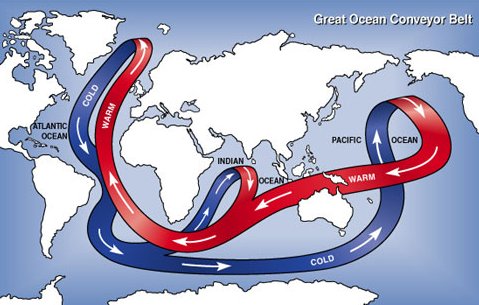The Motions of the Ocean Word Search-Advanced Level
When you find a word, click on the first (or last) letter
and hold down the mouse button. Drag the cursor to the last (or first)
letter and release.
Words can be horizontal or diagonal, forwards or backwards. So have fun and good hunting! Try our Beginner or Intermediate levels for variety...
Tell me more about these words that have to do with the motions of the ocean:
aerosol
, period
, oscillation
, spiral
, coupling
, upwelling
, tides
, salinity
, gyre
, coriolis
, longshore
, eddy
, Gulfstream
, thermohaline
, tsunami
, Ekman
You might also be interested in:

If you've ever been to the ocean, you know that ocean water contains salt. But did you know that air also has salt in it? Many types of tiny particles waft around in our atmosphere. Scientists call these
...more
In areas of upwelling, deep ocean water makes its way to the surface. This has an impact on marine life as well as the region's climate. Upwelling happens commonly along coastlines. Winds blowing parallel
...more
About 70% of the Earth is covered with water, and we find 97% of that water in the oceans. Everyone who has taken in a mouthful of ocean water while swimming knows that the ocean is really salty. All water
...more
The water at the ocean surface is moved primarily by winds. Large scale winds move in specific directions because they are affected by Earth’s spin and the Coriolis Effect. Because Earth spins constantly,
...more
Ocean waves often approach a coastline at an angle. This moves water along the coast in a longshore current. Longshore currents grow stronger when the incoming waves are closer to perpendicular to the
...more
The world has several oceans, the Pacific, the Atlantic, the Indian, the Arctic, and the Southern Ocean. While we have different names for them, they are not really separate. There are not walls between
...more
A gyre is another name for a swirling vortex. Ocean gyres are large swirling bodies of water that are often on the scale of a whole ocean basin or 1000’s of kilometers across (hundreds to thousands of
...more














